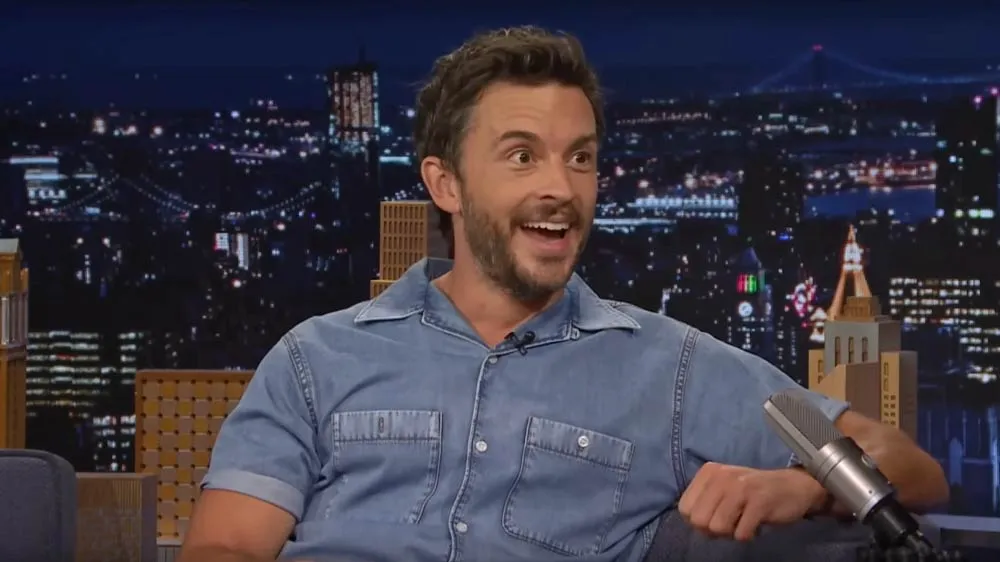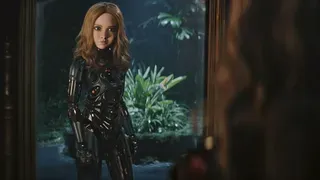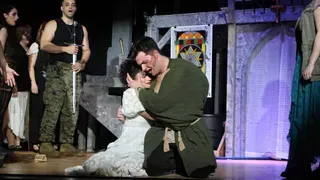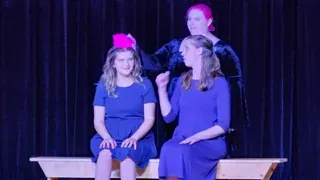December 13, 2016
Rogue One: A Star Wars Story
Kevin Taft READ TIME: 5 MIN.
"Rogue One: A Star Wars Story" is the first standalone film in the "Star Wars" canon. As such, it doesn't focus on characters we've known about or met before. It's a gamble for sure, but wisely the film isn't truly a standalone, as it acts as a direct prequel to "A New Hope" - so much so that it ends about ten minutes before "A New Hope" begins. So the question is, how engaging and successful is this new addition to the "Star Wars" franchise, and will it be as popular as last year's continuing adventure of the Skywalker clan?
The answer is mixed. Everything you see on screen is (mostly) effective, between the stunning special effects, cinematography, nostalgic score, and acting. This is still clearly the world George Lucas created, but it thematically and visually exists somewhere between the prequels and "A New Hope." It also resembles the "Battlestar Galactica" reboot in many ways, which isn't necessarily a bad thing.
The story here expands on the crawl from the 1977 original that speaks of stolen Death Star plans. Said blueprints have made it into the hands of Princess Leia, who hides them in the droid R2-D2. That little droid, accompanied by a fellow mechanical being named C-3PO, then escapes to Tattooine to find Obi-Wan Kenobi. Lucasfilm takes the idea of those stolen plans and explores the people that were responsible for obtaining them.
The main character here is Jyn Erso (Felicity Jones), a criminal who is broken out of prison by a group of rebels who need her help. Why her? Because Galen Erso (Mads Mikkelson), the father she hasn't seen in many years, is the architect of the Death Star -- a space station capable of destroying entire planets. Of course, having not seen her father in almost two decades, her inclusion is suspect, but the rebels throw together a group of rag-tag individuals to find Galen and get their hands on the plans.
The "Dirty Dozen" group that is formed includes sniper Cassian Andor (Diego Luna), who becomes the de facto leader of the mission; his snarky robot side-kick K-2SO (Alan Tudyk); the protectors of the Kyber Crystal temple, Chirrut Imwe (Donnie Yen) and Baze Malbus (Wen Jiang); and one of Galen Erso's pilots, a defector named Bodhi Rook (Riz Ahmed), who is the first to tell the rebels about the Death Star. They are all drawn together by a serious of connecting events and eventually become the heroes of our story.
The villain of the piece is Orson Krennic (Ben Mendelsohn), the man tasked to make sure the Death Star is completed and fully operational. He is joined by another character who will remain a surprise for those that would prefer a totally spoiler-free review.
There are some returning favorites -- in cameos which I won't spoil -- and, of course, the icon of evil, Darth Vader (once again voiced by James Earl Jones). Vader is a welcome sight for fans, and while his screen time adds up to about ten minutes in total, his appearances are memorable.
That said, despite all the technical razzle-dazzle the story is problematic. The issues rest in getting audiences to care about the characters. Our heroine, Jyn Erso, is a blank slate with only half a back-story and, as a result, not much of a character arc. While we see her as a child in the opening ten minutes, once we are introduced to her as an adult we have no idea who she is. She wakes up in a prison and is then being transported to some sort of work facility, but we never know why she's in prison nor what her life was like when she was put there. As a result, her reluctance to join the rebellion when called to do so isn't as effective as it would have been if we had gotten to know her a little better first.
The same goes for the rest of the team. Aside from one-liners about their backstories, there isn't anything else for us to hang a lantern on. We know that the Empire is collecting Kyber Crystals (used to power lightsabers) in order to make the powerful laser that the Death Star uses to destroy planets. So when we are introduced to Chirrut and Baze, we simply learn they are there to protect the Kyber Crystal temple. But aside from literally sitting in front of the door, we don't know what they do, nor ever see inside the temple. What is at stake for these two protectors? All we know is that Chirrut dons the stereotype of the wise blind Asian mystic who is a master of martial arts. Why in the world of "Star Wars" do we have characters that are directly taken from modern day mythology? It honestly feels a bit lazy. However, as pointed out by a friend, based on one line from Chirrut, it's quite possible we are witness to the first gay lovers in the film series.
Even Jyn Erso's childhood savior, Saw Gerrera (Forest Whitaker), shows up years later a bitter, broken man (and part machine), but we really don't know why the two parted ways or why Gerrera is now kind of a jerk. Not to mention, why does he breathe through an oxygen mask? (He is apparently a character from the cartoon series "The Clone Wars"; however, for those that don't follow the show, film audiences should have been allowed to catch up.) In fact, many plot points are told to us rather than shown. As an audience member, whenever someone would talk about the past, I kept thinking, "Well, that is something I wish I had seen."
Because of the lack of fully realized characters (we really have no idea who Cassian is, either) it's hard for the audience to care about them. They all just become archetypes and tropes whose story beats play out just as we expect them to. All of the actors are good (despite some less than stellar dialogue), so that helps it all go down easily, and the one bright spot -- the droid K-2SO -- begs for more screen time.
Director Gareth Edwards (the last "Godzilla" reboot) does a nice job at handling all of the pieces he needs to and including a lot of fan service throughout. Composer Michael Giacchino (the first new composer in the film series) mimics John Williams' iconic score enough that his work does sound like Williams. He even takes pieces of cues from the original trilogy and sprinkles them throughout. (Although the opening titles could have used a cue that didn't sound like elevator music.)
Here's the thing: For "Star Wars" fans there is a lot to love and get excited over. There are so many little nods (including CGI-recreated X-Wing pilots) that get the fanboy/girl in everyone giddy. But it's not as engaging as it should have been, and while the last act has a number of rousing moments, it still doesn't have the impact it could have. This isn't as repeatable a "Star Wars" film as previous installments, but it will please a good chunk of its intended audience.
It just could have -- and should have -- been more.
Kevin Taft is a screenwriter/critic living in Los Angeles with an unnatural attachment to 'Star Wars' and the desire to be adopted by Steven Spielberg.





